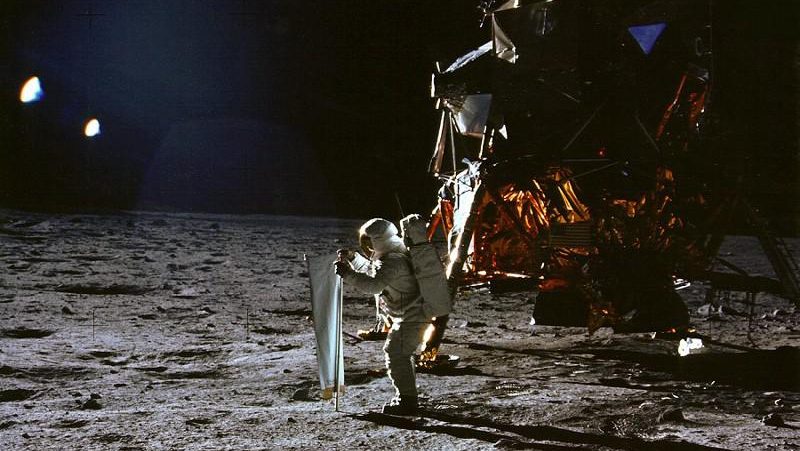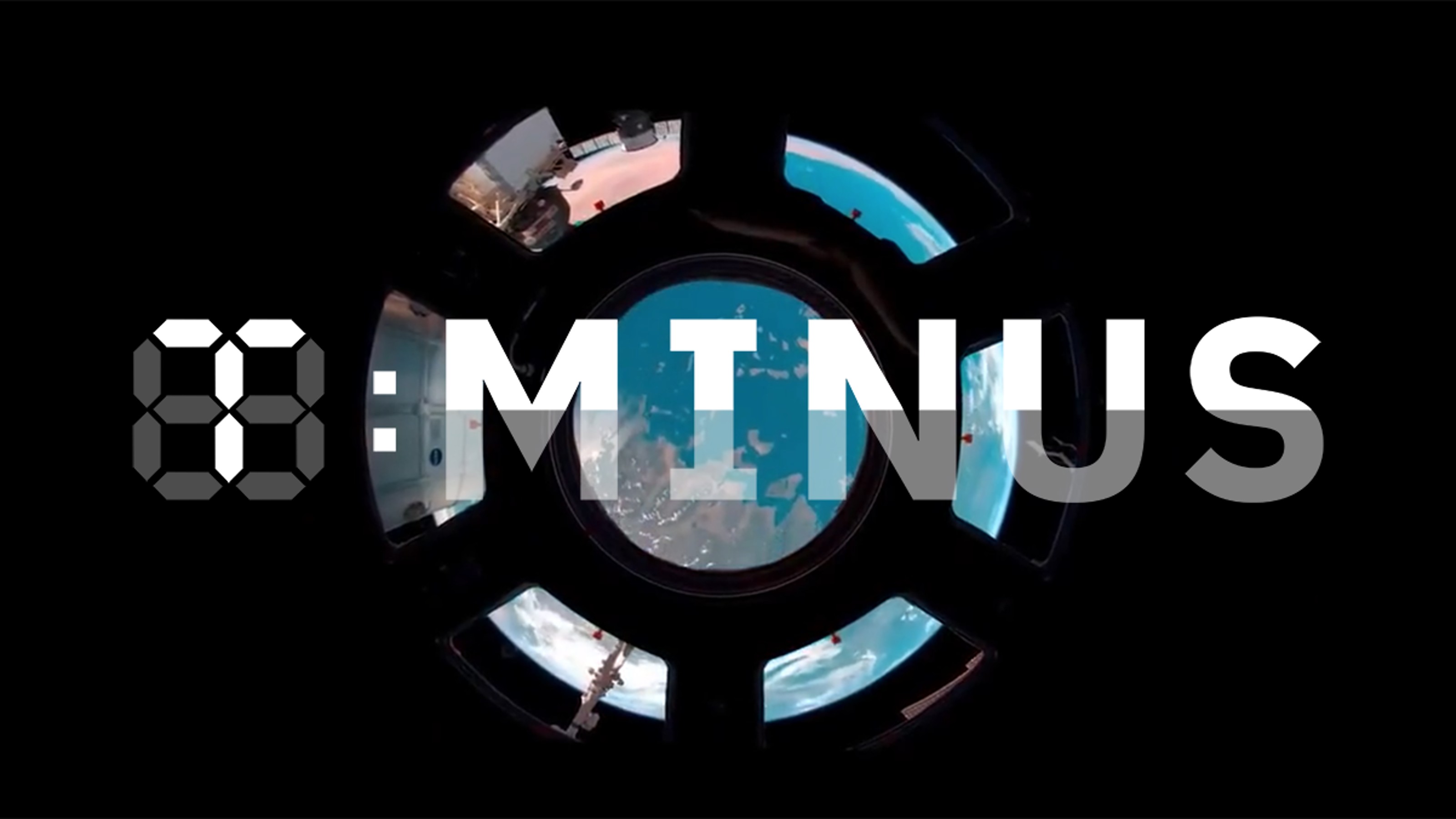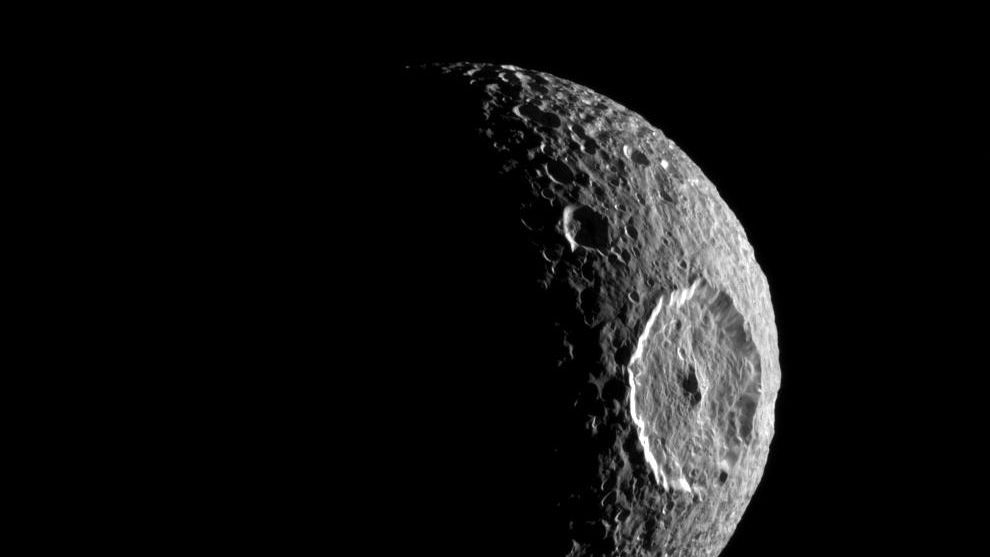The Inconstant Moon
Supermoons are both super and common, but they’re only a tiny slice of our nearest neighbor’s magnificent journey.
Image credit: ESA / NASA and the International Space Station.
“O, swear not by the moon, the inconstant moon,
That monthly changes in her circled orb,
Lest that thy love prove likewise variable.” –Romeo & Juliet, Act 2, Scene 2
Variable indeed.
I don’t know about you, but for a while I think I took the Moon for granted. It was just that thing in the sky that wasn’t the Sun. I noticed it changing from time to time, but never really stopped to think about how or why other than just to note that it occasionally looked brighter or bigger. Or sometimes seemed to be missing. Of course I still loved staring up at it and pondering what else as out there, but I was looking past the Moon, not dwelling on it.
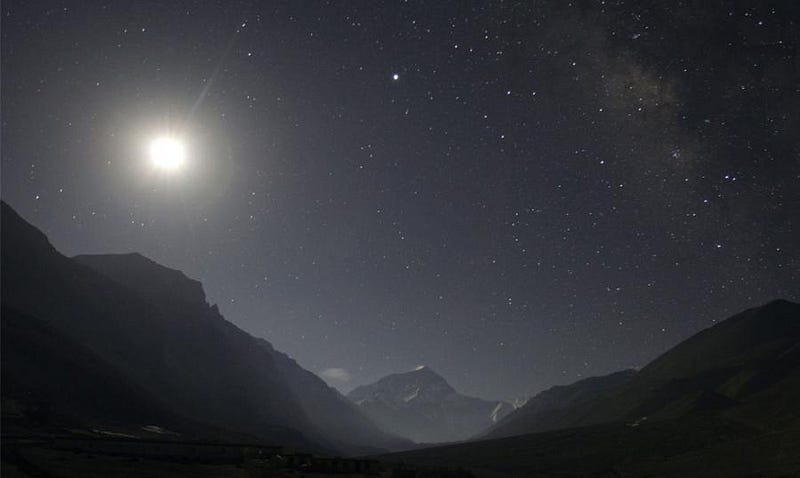
Unsurprisingly, perhaps, the inconstant moon is a product of physics. It’s a product of gravity and orbital precession and alignments and eccentricity.
Johannes Kepler was the first to realize that all orbits are actually ellipses; no such thing as a perfect circle in space. Instead all orbits have two centers, or foci, which can be close together or far apart. The closer together they are, the more circular the orbit. The farther apart, the more elliptical, or eccentric. We define orbits by their eccentricity, or deviation from circular, by giving them a value between 0 and 1, where 0 is a circle and 1 is a parabolic escape orbit. For reference in our Solar System, Earth’s orbit has an eccentricity of 0.0167 with the Sun at one foci and the other foci about three solar diameters away.
That’s close by astronomical standards! Closer to the other end of the spectrum is Pluto (e = 0.25), whose eccentric orbit moves it in and out of Neptune’s orbit over the course of its year.
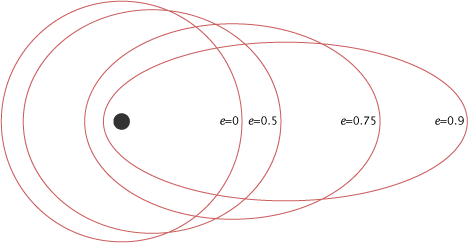
What ellipses imply, of course, is that there are times when orbiting objects are closer together and times when they are farther apart. The technical terms for these times are pericenter and apocenter, respectively. However, since we are going to focus on the Earth-Moon system, I’ll use the terms perigee and apogee instead as the suffix “gee” stands for Earth. The Moon’s orbit has an eccentricity of 0.0549. Not too eccentric, but just enough to give rise to the media’s favorite new term: Supermoon.
Supermoons are new in name only; the Moon is the same as it ever was. The term refers to a full moon at or near perigee, because the Moon is in fact bigger and brighter at that time.
Compared to a full moon at or near apogee, a Supermoon can be ~15% bigger and ~30% brighter!
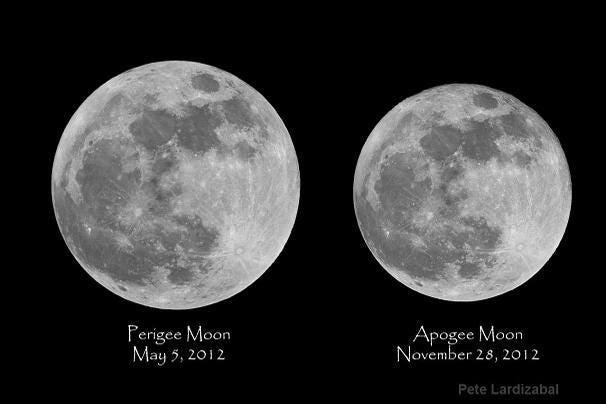
Yet, while those stats are quite impressive, a full moon at perigee never directly follows a full moon at apogee, or vice versa, so you never really have the chance to make the direct comparison as shown above. And plenty of full moons take place nowhere near perigee or apogee, but somewhere in between. In reality, the Moon goes through a suite of gradual changes day to day, month to month, and year to year that every now and then add up to something super.
Let’s start with how the Moon changes in its “circled orb” on the timescale of days. The most obvious way the Moon changes is in phase (which I’m guessing is the meaning of Shakespeare’s original reference). However, this isn’t the only thing going on. The lunar phases are a red herring of sorts; the Moon’s position in the sky is changing too. And that’s more what’s at work here.
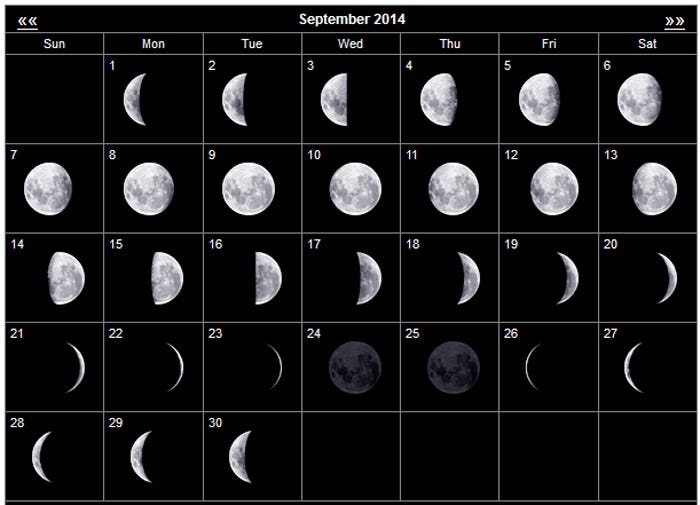
The months in our calendar are actually based on the Moon’s orbit, but not all lunar months are equal. There are sidereal months, synodic months, tropical months, anomalistic months, and draconic months, none of which are equal to the months we learn in early childhood. (And you thought learning the “Thirty days has September…” rhyme was complicated!) Each type of month reflects the time it takes for the Moon to complete a cycle of sorts: with respect to phase, background stars, specific points in its orbit, etc.
The lunar month most people are familiar with is the synodic month: the time it takes the Moon to go from full to new and back to full again. It’s also the easiest to observe, you don’t even have to be a physicist or astronomer to see it! If you’ve watched the phases of the Moon often enough, you probably noticed that once in a while some months have two of the same phase: most noticeably two full moons, the second of which is often called a blue moon. This is because the synodic month is shorter than the average month, about ~29.5 days.

Complicating the picture is the fact that the Moon’s orbit precesses. This means that perigee (or apogee) doesn’t occur in the same place in space for each revolution the Moon completes around the Earth. An anomalistic month is defined as the length of time it takes for the Moon to return to one of these extreme positions, perigee to perigee or apogee to apogee. An anomalistic month is actually shorter than a synodic month by roughly two days because, as the Earth moves around the Sun, the Moon has to trave; a little farther to reach the right geometry with the Earth and the Sun to produce the same degree of illumination (or phase). This is why there is no fixed correlation between the phase of the moon and its location in its orbit.
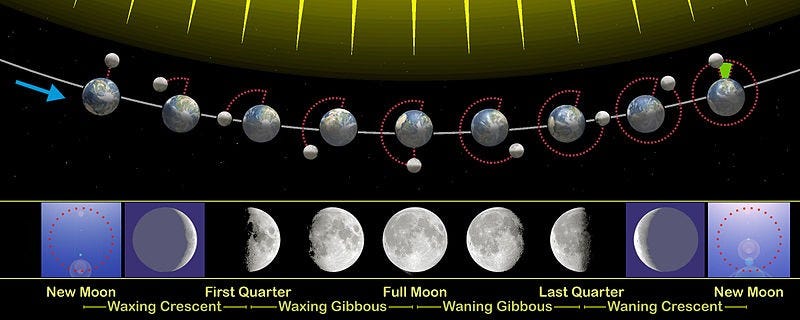
However, once every 8.85 years, the Moon’s orbit goes through one complete cycle of this precession and the process starts all over again.
As if all that weren’t enough, the plane of the Moon’s orbit is inclined with respect to the plane of the Solar System (what we call the ecliptic) by approximately 5.15 degrees. This means that the Moon moves higher or lower in the sky by more than 10 degrees over the course of a year.
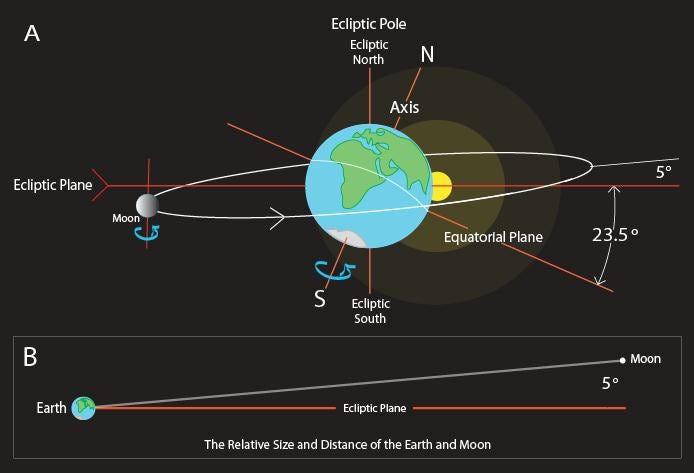
And on top of that, the Moon has the tiniest tilt in its axis of rotation (only about 1.5 degrees), but enough to contribute to an interesting dynamic known as lunar libration.
Lunar libration is the perceived oscillation motion of the Moon as seen from Earth. The combination of the ways in which the Moon’s orbit changes (discussed above) along with how we here on Earth are moving produce this fascinating effect. To fully appreciate lunar libration, recall that the Moon is actually tidally locked to the Earth. This means that as the Moon revolves on its axis in its orbit around the Earth, the same side of the Moon always faces us, i.e., there is a near side and a far side. This would seem to imply that we could only ever see 50% of the Moon’s surface from Earth. Enter lunar libration.
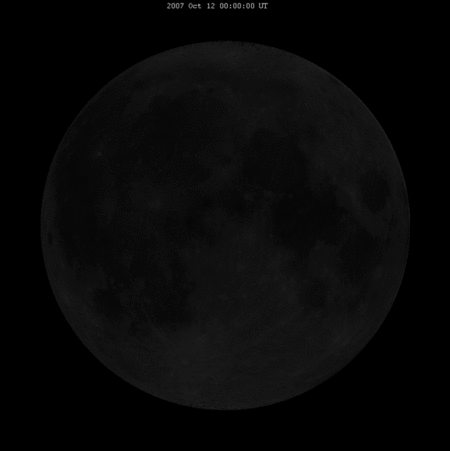
As you can see from this animation, the Moon is tilting and twisting all over the place. What’s happening is threefold. First, the eccentricity of the Moon’s orbit gives yield to latitudinal libration, the wobble from side to side. Second, longitudinal libration, the wobble from top to bottom, is a result of the combination of the Moon’s axial and orbital tilts. Lastly, our daily motion on the surface of the Earth (diurnal libration), rotating through moonrise and moonset allows us to essentially peak around the edge of the Moon first from one side and then from the other. All three of these librations add up to us actually being able to see an additional 9% of the Moon’s surface!
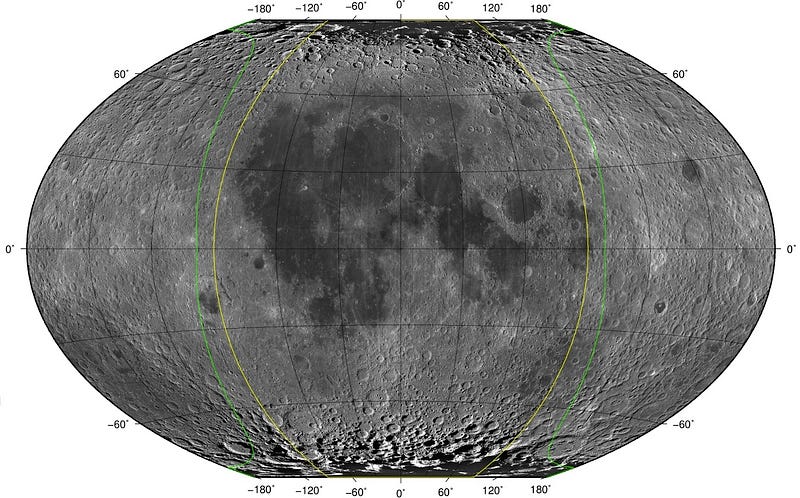
You probably also noticed that the Moon was growing and shrinking in the animation as well. That’s the average monthly change shown continuously as it moves from perigee to apogee and back again. Hypnotic.
Surely we must have covered all the factors contributing to our inconstant moon by now right? Wrong!
There’s an additional result of the Moon’s orbital inclination: the Moon crosses in and out of the plane of the Solar System on a “monthly” basis. These crossings are significant as they are the only times during which eclipses can happen. Every synodic month, the Moon passes between the Sun and the Earth. Similarly, every synodic month, the Earth goes between the Sun and the Moon. And yet, we don’t have a solar eclipse or a lunar eclipse every month. Why? Because the crossings and the alignments have to coincide. When they do, the Moon will directly block the Sun from Earth or the Earth will directly cast its shadow over the Moon. There’s even a word for this: syzygy.
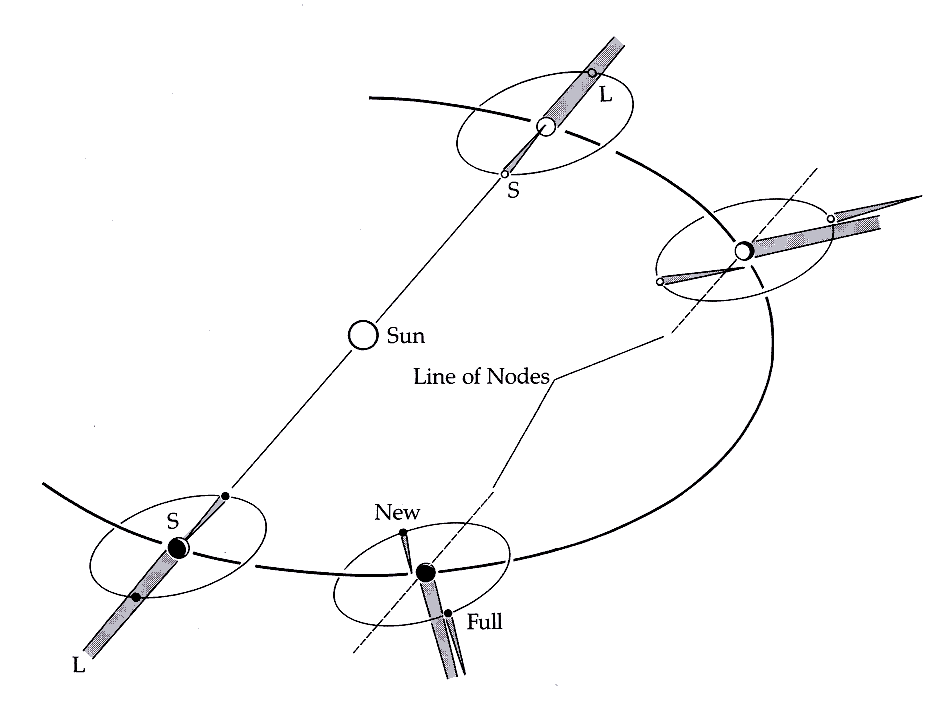
Syzygies in the Earth-Sun-Moon system occur twice each year, which would seem to imply that there should be two eclipses per year. But it’s even better than that, thanks to the fact that the Earth and Moon aren’t points, but rather spheroidal objects of considerable size. There are actually eclipse seasons — two per year — each lasting ~34 days, during which two-to-three eclipses take place: solar and lunar, total and partial. That’s up to six eclipses per year! The syzygy doesn’t actually have to be exact for the effect to be visible for us. There is a small range of angles before and after the Moon crosses the ecliptic within which the Moon will still block light from the Sun as viewed from Earth and/or the Earth will still cast a shadow on the Moon.
The next eclipse season starts next month and kicks off with a total lunar eclipse early on the morning of October 8th (EDT). It will also be another one of the media’s new favorite terms: a blood moon.
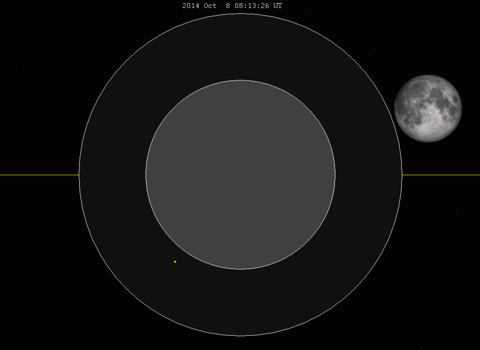
Blood moons are also new in name only. Someone decided a total lunar eclipse wasn’t exciting enough and decided to give it a sensationalized, terrifying name. Regardless, the phenomenon is pretty sensational. Normally, you’d expect a shadow to be black; one body comes between a light source and a surface and the light is blocked. And that is exactly what’s happening here: the Earth comes passes in front of the Sun and casts a shadow on the Moon. However, the Earth is not completely opaque; our thin atmosphere allows light to pass through, and this makes all the difference. When sunlight passes through more of our atmosphere rather than less (think near the horizon versus high overhead), it reddens, creating the colorful sunrises and sunsets we love to Instagram.
This is again due to physics, the physics of optics, in which light passing from one medium to a next gets bent differently for different colors (or wavelengths).

So blue wavelengths get scattered away since they bend more, while red wavelengths predominate the longer a path the light takes through the atmosphere. During a lunar eclipse, sunlight is not only entering Earth’s atmosphere, it’s exiting it as well, and some of that exiting light lands on the Moon! The red wavelengths of sunlight that are bent by the right amount can illuminate the surface of the Moon, and turn it from black to red. As Phil Plait so elegantly put it: if you were on the Moon during a total lunar eclipse, you would see all the sunrises and sunsets on Earth at once. That’s definitely an amazing thought. And a much more beautiful one than the horror sounding “blood moon,” in my humble opinion.
All of this is not to say that supermoons and blood moons aren’t worth getting excited about. Clearly they are! In my opinion, anything that gets people outside, looking up, and thinking about our place in the Universe is a good thing. So I am all for the hype if that’s what it takes. As David Dickenson over at Universe Today says: “come for the hype, and stay for the science.”
My goal in explaining these lunar phenomena is not to dismiss the hype, but rather to deepen your understanding and appreciation of our celestial companion. I see the Moon as a great example of how amazingly dynamic our Universe truly is, something we can’t often comprehend as most things that change do so on such dramatically long (dare I say astronomical) timescales that they are often imperceptible to us.
So next time you look up at the Moon, maybe even tonight, I hope you keep in the back of your mind all the exciting physics that make it change in its circled orb.
This post was written by Summer Ash, Director of Outreach for Columbia University Astronomy and the in-house astrophysicist for the Rachel Maddow Show. Follow her on Twitter as @Summer_Ash.
Leave your comments on the Starts With a Bang forum at Scienceblogs!
